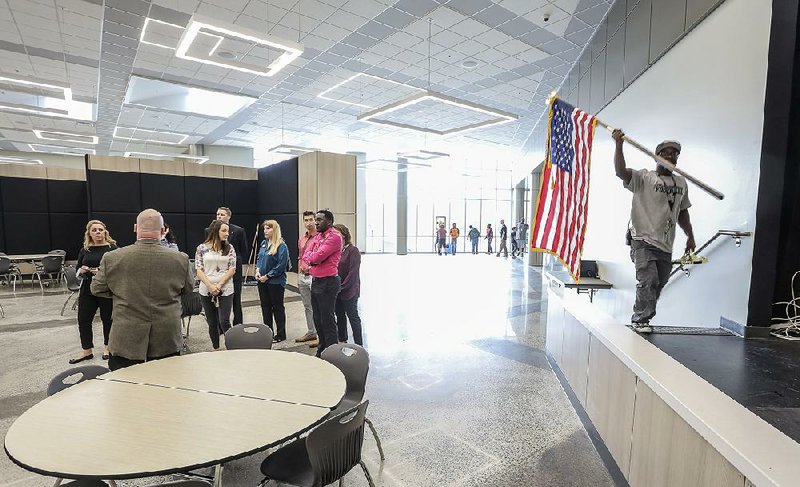A year after Pulaski County Special School District leaders reported a multimillion-dollar shortfall in meeting the $101 million price tag for new or renovated schools, the School Board took steps Tuesday to raise the money by issuing second-lien bonds.
The board voted 6-0 to authorize its fiscal agent, Stephens Inc., to apply to the Arkansas Board of Education for permission to issue bonds in the amount of $20,485,000.
The money would be used to complete construction of the new Robinson Middle and Mills University Studies High schools, and the relocation of what was Fuller Middle School into the former Mills High site that is newly designated as Mills Middle School.
Charles McNulty, superintendent of the district since July, said after the meeting that he was pleased with the board action.
"We have had great conversations with the board," he said. "They have been very supportive and for them to have a unanimous decision is a good sign.
"It's still going to be tough financially," he added about the district's overall finances in the wake of losing $20 million a year in state desegregation aid and a declining student enrollment. "We're going to make some tough decisions," he said.
If the state Board of Education approves the second-lien bond issue application at its December business meeting, the school district would immediately offer the bonds for sale to investment firms, ultimately selling the bonds to the firm that offers the lowest interest rate for the district's repayment of the debt.
Second-lien bonds are repaid with interest over multiple years using district money that is over and above what the district needs to pay previously issued bonds.
Second-lien bonds do not require the approval of school district voters in an election. That's in contrast to general-obligation bonds that are financed with a voter-approved property-tax increase or tax extension. (Pulaski County Special district voters in June 2017 approved extending the levy of 14.8 existing debt-service tax mills to support $65 million in general-obligation bonds for the expansion of Sylvan Hills High in Sherwood.)
The process of issuing second-lien bonds does allow for a two-week period in which people can submit to the county/circuit clerk their support or objections to a proposed bond issue, Jack Truemper, senior vice president at Stephens Inc., told the School Board on Tuesday. Any objections or documents of support from the public would then go to the state Education Board with the bond sale application.
The proposed $20,485,000 issue would be repaid by the district over 30 years. The district's annual payment on the proposed new debt would rise from $708,920 in fiscal 2019 to as much as $1.6 million in 2036 before the annual payment would begin to decline.
The new debt would be in addition to existing debt in the district, making the district's total annual payment $15.5 million in fiscal 2019, then increasing to about $17.2 million in each of the next 16 years before dropping to about $7.4 million in each of the subsequent 13 years.
District leaders reported a year ago, in October 2017, that the Mills University Studies High and Robinson Middle school construction projects would exceed the $40 million-per-campus cost that was proposed to the state Department of Education and approved by the state education commissioner in March 2016.
At that time, the state commissioner acted in place of an elected school board because the district was under state control for fiscal distress. The district was later released from state control.
The $40 million planned for Mills was short of the $55 million that the district had told the federal court it would use to build Mills and relocate Fuller Middle School to meet its obligations in a long-running school district lawsuit. District leaders have since committed to the court to spend $55 million at the new Mills High and refurbished Mills Middle campuses.
As a party to the federal lawsuit, the district is obligated to bring parity to the condition of its school buildings, some of which are old and in neighborhoods that have higher percentages of black students than do the neighborhoods near the district's newer, more modern schools.
Denise Palmer, the district's chief financial officer, said Tuesday that the district would draw about $6 million from the $20 million bond money to reimburse the district for construction costs already paid out of the district's operating budget. More than $13 million will be put in the district's building fund to complete the projects.
Both Robinson Middle and Mills High opened to students and staff members in August.
The second-lien bond issue, if approved by the state, would be coupled with operating budget cuts of about $9 million to be made primarily in the 2019-20 school year. The bond issue and budget cuts together are intended to protect the district from repeatedly drawing from its financial reserves -- a practice that puts a district in jeopardy of being classified as fiscally distressed and being taken over by the state.
Metro on 10/10/2018
